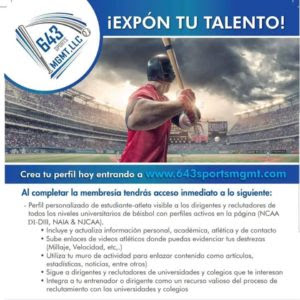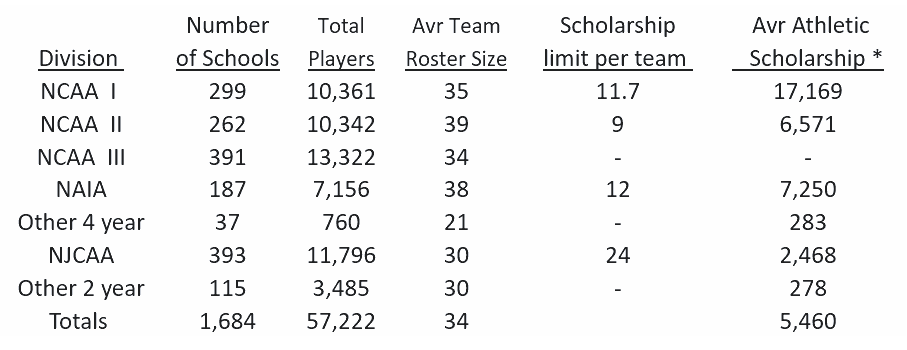Agreement in MLB for the 2020 season
Among the agreements applicable to MLB players are:
- Players in an MLB roster (actives or injured) will accumulate a season of service time equivalent to what they accumulated in 2019 if the season is canceled.
- Players on the 40 man roster will receive $170 million for April and May 2020, payable in case the season is canceled.
- Player transactions are canceled until a previously defined date between both parties near the beginning of the season.
At first sight, both team owners and players benefit. Players receive credit for their length of service time in 2019 in addition to part of their salary in the event of the season being canceled while the owners avoid disputes with players over their salary and create a legal framework for handling compensation. / vc_column_text]
Changes in Draft 2020
- There will be a maximum of 5 rounds which considers approximately between 150 – 170 selections including the selections in supplementary rounds.
- Unselected Free Agents (UDFA) may sign for a maximum of $ 20,000 bonus.
- 2021 MLB Draft could have a maximum of 20 rounds.
These changes will impact the players who have a commitment to a college or university to play in 2020-21 as well as players with the possibility of being selected and signed in the Draft. Not only are draft selections limited, but the NCAA has already approved to allow the schools to provide spring-sport student-athletes an additional season of competition and an extension of their period of eligibility without any provided financial aid counting against the 11.7 athletic scholarships available at the NCAA D1 baseball level. This means that many players projected to graduate will be able to return to their respective universities creating a greater amount of talent competing for participation, further impacting the “pool” of high school players who generally have a 2% probability of playing at the NCAA level. D1. As illustrated below, 11.7 scholarships are offered at the NCAA D1 level and 9 at the NCAA D2 level, while both the NCAA and NJCAA levels D3 do not offer athletic scholarships.
How are Players in PR impacted?
Finally, they could consider signing professional contracts in international leagues, such as the case of Carter Stewart, a JUCO pitcher who signed a $6 million contract with the Fukuoka SoftBank Hawks of the Japan Professional League in 2019, the first time that an amateur American player signed professional directly with a team from the Japanese league. This could become a trend if MLB does not release certain Draft controls and allows teams greater flexibility and investment power in the coming seasons.
We must also remember that by 2022 there is a possibility that MLB will hold an International Draft, changing the current amateur talent acquisition mechanism in Latin American and Caribbean countries such as the Dominican Republic, Venezuela, Mexico, Panama, Curacao, etc. Currently, these players, although with certain limits, can sign as free agents for amounts up to $ 300,000 without the team incurring any penalty. Being subject to a Draft eliminates the incentive of a scout signing a player directly vs. going through the draft, similar to what happened with PR when the draft was implemented in 1989 and affected the island’s steady flow of talent produced locally and who starred in MLB. Around the mid-late ’80s, prior to the integration of the draft in PR, we produced outstanding players, among them hall of fame, such as Ivan Rodriguez, Roberto Alomar, Edgar Martinez, Juan “Igor” Gonzalez, Carlos Delgado, Bernie Williams, Carlos Baerga and Javy Lopez, among others.

When analyzing the Draft results in PR for 2012-19, only 10% of all the selected Puerto Rican players (mostly from high school) have been selected in the first 5 rounds of the Draft.

MLB DRAFT OVERPOOL PENALTIES (2018)
We chose 2012 because it was the first year of the collective bargaining agreement (CBA) signed prior to that season between MLB & MLBPA that integrated penalties (illustrated) to MLB teams that signed players for bonuses greater than those established according to the value of each selection and the team’s pool $.
The bulk of Puerto Rican player selections have been between rounds 11-20 that occur on what we call the 3rd day of the draft. When they are chosen after round 10, a team that selects the player will not be forced to sign it as it happens in rounds 1-10 where if the team does not sign the player they lose the $ of the value of that selection. Nothwisthanding, any dollar spent on rounds 11-40 for a bonus over $ 125,000 paid to a player counts against the teams’ draft pool $. This MLB changes essentially eliminate that option, and the unelected player in rounds 1-5 will not be able to sign for more than $20,000.
What should we start doing about College Baseball Recruiting in PR?
Another area where they can refocus to eventually aspire to better academic opportunities at the university level is in placing development over exposure. We have previously written on this topic which is one of the bases of our philosophy when evaluating the recruitment process to play at a high collegiate level. While it is true that exposure is important it is also true that if the player has not developed properly efforts to seek exposure can be in vain. College-level baseball is highly competitive at all levels, not just D1 & D2. It is important to have a focus on avoiding injury risk factors from an early age so that the player is then well-positioned and can develop with the necessary support. Eventually, it will be time to get exposed at the talent showcase circuit indicated but before that, at ages 12-16 pursuing exposure opportunities if the player is not ready yet can be contraindicated and create an expectation of results (recruitment, rankings, etc) which is more intangible than what they can control.
We understand that the recruitment process really begins when the athlete begins to develop at ages 7-12 years. Without an established base and, above all, without prevention of overuse and injuries from those ages, the player could already be compromised physically when his exposure phase arrives. For this reason, together with certified trainer Daniel Vendrell and AREA Sports Development, we seek to work with children responsibly and create a secure foundation for their physical development. Not everyone will be able to play at the university level or sign a professional, but we will avoid compromising them physically from an early age by putting their development over competition at that age.
Each player has a different strategy to manage their recruiting process. Therefore, it is important to be properly informed when considering whether exposure or development is established as a priority. To be successful, the recruiting process must be directed to the player’s academic and athletic goals and abilities.
If you are interested in playing at the 4-year university level, start preparing for 9th grade. Contact us and coordinate a free virtual orientation to your team.

EXPOSE your talent to over 100+ FREE College Coaches & Recruiters
What services do we offer?
- Video, Evaluation & Profile Certification
- Academic Advisory
- FREE exposure to over 100+ College Coaches and Recruiters via www.643sportsmgmt.com/player-
registratrion
How can I get in contact with 643 for more information?
- Telephones – (787) 546-4828 / (787) 948-3438
- Email: 643sportsmgmgt@gmail.
com - Website
Go to www.643sportsmgmt.com and start your recruiting process TODAY!
Follow us on :
Luis Frontera is from Trujillo Alto, Puerto Rico. He pitched collegiately at Iowa Wesleyan College in Mt. Pleasant, IA. He currently serves as President of 643 Sports MGMT, LLC in Guaynabo, Puerto Rico.
[/ vc_column_text] [/ vc_column] [/ vc_row]


